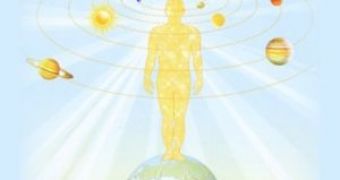Ayurvedic supporters claim that Ayurveda natural method of treating both body and mind is the oldest holistic system of medicine in the world. Literally, Ayurveda is a compound Sanskrit word formed from "ayur" that means "science, knowledge" and "veda" that means "life." The origins of this traditional medicine go back to the period in which Buddha and Lord Brahma lived, while the ancient texts of Vedas provide historical evidence of the existence of Ayurvedic wisdom.
The Vedas are the ancient scriptures that illustrate the Hindu teachings. By reading them we can find out how the ancient people used to live, think and what methods of traditional healing they used in order to keep the body healthy and unaffected by various diseases. The Vedas are in fact four Vedas, called Rig Veda, Sama Veda, Yajur Veda and Atharva Veda. Each of the four Vedas consists of four parts; therefore there are 16 parts in the Vedas.
Rig Veda's text contains useful information on what was considered to be the real nature of health and diseases and also on the methods and principles of treating health disorders. The text also makes a description of what herbs and other natural remedies were used to treat all kinds of conditions.
Strictly on Ayurvedic traditional medicine we find details in the fourth of the Vedas, the Atharva Veda. Here we have listed the eight divisions of Ayurveda (mostly like the various branches of modern medicine): internal medicine (kaya chikitsa), surgery (shalya), ophtalmology and otorhinolaryngology (shalakya), toxicology (agad tantra), psychiatry (bhoot vidya), pediatrics (kaumar bhritya), gerontology (rasayana) and the science of fertility (vajikarana).
The basic principle of the Ayurvedic medicine lies in a balanced lifestyle that must be achieved by any human being. If one affects the natural balance and harmony present in his body and sleeps or eats excessively, he will fail to preserve the equilibrium of the metabolic functions. Therefore, he will get sick and the cure for the balances in his organism is to be found in practicing yoga: "He who is temperate in his habits of eating, sleeping, working and recreation can mitigate all material pains by practicing the yoga system." (Bhagavad-gita 6.17)
But the Ayurvedic method of treating the human body and psyche is not related only to Yoga and relaxation methods. The ancient people believed that all physical disorders are caused in one way or another by stomach and indigestion disorders. Indigestion is called in the Vedic literature "the parent of all diseases" and it is assumed that all health impairments originate in the gastrointestinal tract. In this area of the body that is very important for the digestion is stored the raw material of food, called "ama."
Due to inappropriate eating habits or unhealthy food, the ama can accumulate in excess in the stomach or the small intestine and leads to various disorders of our metabolic functions. This is considered to be the first stage and also the milder stage of the health problems that may occur in an individual. If the ama is not removed from the body it will accumulate on other parts of the body, too, and will lead to more serious conditions. Therefore, in Ayurvedic medicine any health impairment relates to the "ama", seen as the toxins in our bodies.
The Indian holistic system of medicine considers that every living being is made up of five primordial elements, called Panchamahabhootas: space, air, water, fire and earth. Water is found in all body fluids, fire controls the enzymes; air is related to movement abilities, earth to solid structures in the body, while space is associated with the spaces within our physical body.
The ama is always caused by the imbalance of three main factors that are termed doshas or tridoshas in the Indian pathology. The three doshas are tightly connected to the five elements and are represented by: vatta (the combination of air and space elements), pitta (the combination of fire and water) and kapha (the combination of earth and water elements.) Maintaining equilibrium of the doshas and the natural elements within our body is vital for preserving our health.
In conclusion, Ayurveda is not simply a medical method; it is a whole way of living, as it preaches the fact that all living beings should preserve the natural equilibrium of the body in order to be free of any kind of health disorders. Its main goal is to teach us that the balance of physical, mental, emotional and spiritual features of an individual must be carefully watched. However, when we fail to respect the golden rule of equilibrium, we get sick and all we have to do is to restore the balance within our organism.

 14 DAY TRIAL //
14 DAY TRIAL // 

